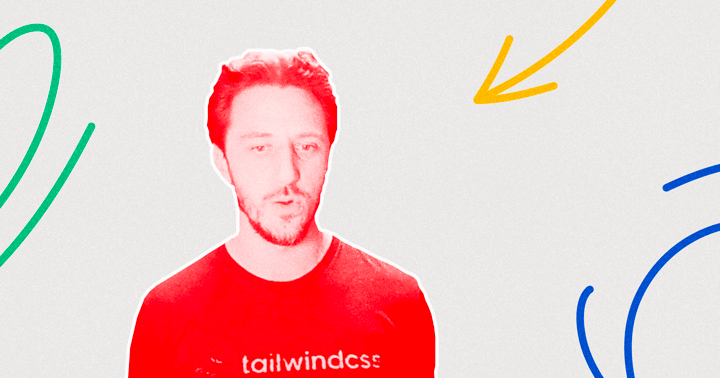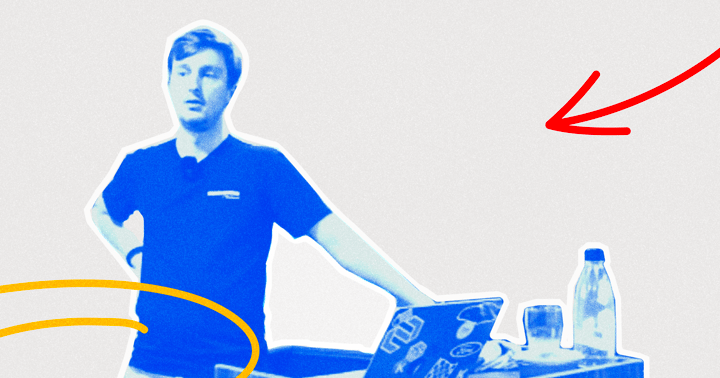Design System Audits
Actionable advice from all sides of the design system equation
With design system experience across platforms, disciplines, and team cultures, Thinkmill helps you understand how your system is performing as a driver of product velocity, consistency, and alignment. Our audits reveal where design and code have drifted, where teams are losing time, and what's needed to bring your system back in step with your product goals.
Need a Design System Audit?
Get in touchThere are very few teams you can hire with more real-world, at-scale Design System experience than Thinkmill.


Dominik Wilkowski
Engineering Lead, Shopify Polaris Design System
Why get a Design System Audit?
Design systems promise consistency and speed, but they only deliver when design, engineering, and product stay aligned. Over time, even healthy systems can slow delivery, duplicate effort, or lose trust. A Thinkmill Design System Audit helps you uncover where that’s happening, and what to focus on next to get value flowing again.
Without close collaboration between designers and developers, systems can quickly drift. Components behave differently in code and Figma, tokens turn from enablers into obstacles if not set up correctly, and even naming things well takes time and practice.
Our audits unlock insights into the gaps that are blocking system cohesion and adoption – as well as deliver context-aware advisory for how to close them – with recommendations that balance design consistency, implementation feasibility, and team workflows.
You might benefit from this audit if…
You’ve started a new system and need expert external validation.
You’re changing tech stacks or rebuilding your component library.
You’re struggling to build accessible components at scale.
Your token architecture isn’t scaling to support new brands, platforms, or themes.
Figma and code have drifted apart and you’re struggling to maintain parity.
You need objective evidence to unlock additional investment or stakeholder buy-in.
Who is this for?
- Business and product leaders who want to understand how well their system supports delivery at scale, and where investment will have the highest impact.
- Design system leads looking to validate and optimise the current system.
- Designers struggling to reconcile their Figma intent with what’s being shipped.
- Product or technology leaders exploring whether a design system is the right investment – or validating the case for one through an independent review.
- Engineers struggling to build design intent in a way that is repeatable.
- Engineers inheriting code libraries without consistent structure.
- Teams in the early stages of planning a system who want clarity on what to build, when to start, and how to set it up for adoption.
- Tech leads or heads of product weighing system ROI or scope.
- Cross-functional teams who are struggling with collaboration across design and engineering.
- Cross-functional teams unsure of how to scale or reset their DS effort.
Pricing
Audits start from $15,000 AUD for a week-long engagement led by system experts across design and engineering disciplines.
We’ve helped teams save months of effort by identifying foundational issues early. We’ll work with you on an approach that responds to what you care most about.
Our process in a nutshell
- Understand the system’s context – your platform, system consumers, end users, roadmap, and known constraints.
- Review design and code artefacts (e.g. Figma libraries, code repositories, component libraries).
- Run workshops on system consumption behaviour, token and front-end architecture, web accessibility, and unit testing.
- Assess adoption gaps and mismatches between design and delivery.
- Identify where your system is enabling or impeding.
- Deliver actionable recommendations with concrete examples that you can implement now or later.
What we cover
Design-to-code alignment
Are Figma components properly mapped to their code counterparts across platforms, libraries, and teams?
Token architecture
Are tokens scalable, structured, and used consistently across themes and brands?
Component design and specification
Are components accessible, appropriately opinionated, and built to modern best practice?
Platform realities
Are system patterns usable across mobile, desktop, or multiple front-end stacks?
Governance & contribution
How well can your teams use and evolve the system while keeping consistency, speed, and alignment intact?
Tooling & documentation
Are Storybook, docs, and handover flows structured, consistent, and supporting smooth collaboration across teams?
Adoption blockers
Where is the system being resisted, bypassed, or misunderstood – and what does that reveal about gaps in design, tooling, or adoption?
Workflow fit
Does the system suit how your teams actually deliver features, or is it forcing workarounds that slow delivery?
After a Thinkmill DS Audit, you’ll come away with:
Strategic insights
System maturity snapshot, showing what’s working and what needs focus.
Priority roadmap for short, medium, and long-term improvements.
Tactical artefacts
Annotated Figma and code artefacts highlighting gaps, overlaps, and naming collisions.
Token architecture advice you can apply to both Figma and code.
Team alignment tools
Recommendations and examples for how to break silos and build together.
Guidelines for measuring cross-disciplinary collaboration going forward.
All of this is presented in a detailed report and playback session you can use to align teams, plan next steps, and make confident investment decisions. You’ll come away with a clear view of how your system supports – or slows – product delivery, and where to focus to unlock its full potential.
We’re incredibly excited about how the ELMO Design System realises our goals to deliver on design consistency, accessibility, an overall great user experience and will save our implementation consultants hours of work.


Matthew Brown
Director of Product & Design, ELMO
Answers to common Design System Audit questions
- We connect system health to delivery outcomes – showing how design, engineering, and product alignment impact speed, quality, and consistency. The result is a clearer picture of where to invest for the greatest return.
- Absolutely. We often work with organisations running multi-brand or multi-market systems. We look for patterns and structural issues that affect scalability, contribution, and adoption across the suite.
- Great. We can assess it for scalability, adoption, and long-term sustainability, rather than starting from scratch.
- While we can certainly provide hands-on design system help, our audit offering is focused on guidance and detailed recommendations. Of course, we’ll include examples of how to optimise your system.
- Yes. We assess how work flows through your system, who owns what, and whether processes support maintainability and scale.
- No. Smaller teams often benefit most from early validation and pragmatic advice to avoid scaling issues down the line.
- Yes, depending on platform and scope. We’ve worked with web, Android, and iOS design systems, and can tailor our approach accordingly.
- Yes. We typically review your Figma library, component source code (e.g. React), and design system documentation site if available. If you can’t provide all of the above, we can work with you to evaluate what you have, and work within your constraints.
- Definitely. Many clients use our design system audit to support a replatform, rebuild, proof of concept, or roadmap planning phase.
- We can audit how effectively that system is being used, how well it meets your product and accessibility needs, and where customisation or extension might be needed.
- In that case, our design system services can help you go from zero to a fully-built design system foundation informed by modern best-practice tooling.
- We do include an accessibility lens across component design, token use, and documentation. We also offer a standalone Accessibility Audit for when you want highly targeted advisory on accessibility.
- We typically run a mix of async reviews and live sessions including workshops with your team, and design/code walkthroughs. We can tailor the cadence to your team’s availability.
- Yes. As a remote-first company, we’re experienced working with distributed teams and can easily adapt sessions across time zones.
- Yes. Many teams engage us early to validate whether a design system is the right solution, or to identify what should come first. We can help you define scope, anticipate challenges, and make early decisions that set your system up for sustainable adoption.
- That depends on your goals. A component library focuses on reusable UI, while a design system connects those components to design principles, tokens, documentation, and ways of working. Our audit helps you understand what level of system your organisation needs – and what will deliver the most value right now.
- Yes. Our audit gives you objective insight into where your teams are losing time, consistency, or alignment – and what a design system could unlock. Many clients use this evidence to secure funding or stakeholder support with confidence.
- Absolutely. We can review your proposed approach, architecture, or roadmap to highlight risks and opportunities before you commit to full-scale development. This saves months of rework and helps you focus investment where it matters most.
Learn more about our Design Systems work
Deep dive into more articles and videos related to Design Systems.
talk
Building a Multi Brand Design System with Tailwind: Tips, Tricks and Tradeoffs
Lessons learned from using Tailwind CSS in a multi-brand design system project.
article
Storybook and Mock APIs: A Powerful Prototyping Combo
No back-end? No worries! In this tutorial we’ll be using Storybook and a Mock API to create a mocked prototype so we can get on with keeping our stakeholders excited.
· 12 min readnews
How a well thought out design system is turbocharging Keystatic development
The Labs team are making great strides with their new codebase-friendly CMS: Keystatic. Here’s an example of how a good design system can turbocharge front-end development.
talk
Designing at scale: an overview of Design Systems
Watch Design-engineer Nathan Simpson’s high-level overview of Design Systems, and how large organisations can achieve design at scale.
Want to know more? Chat to our design system experts
Get in touch to discuss how we can help your system drive product velocity, consistency, and alignment across teams.



